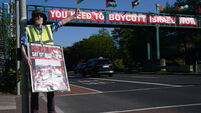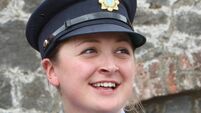Museum’s replica trench designed to capture horrors of war

“It is a very accurate representation of what a trench on the western front would have been like,” said Gerry White, chairman of the Cork Branch of the Western Front Association.
“It gives a real sense of the claustrophobia and terror of living, fighting, and dying in the trenches. If a soldier from 1914 walked through it, he’d feel very much at home.













